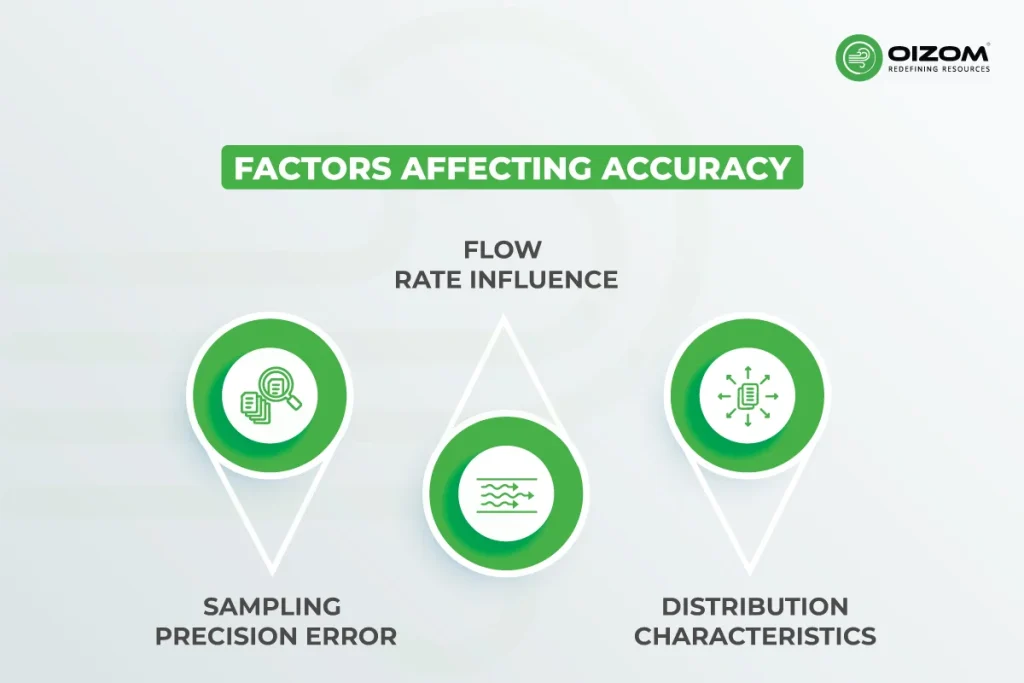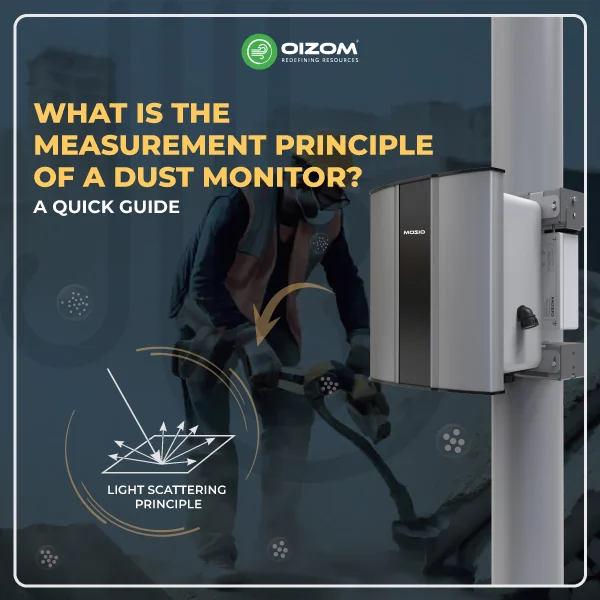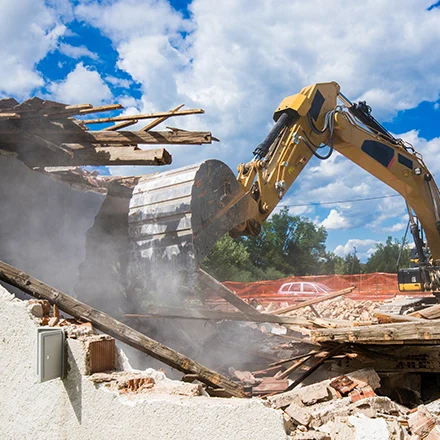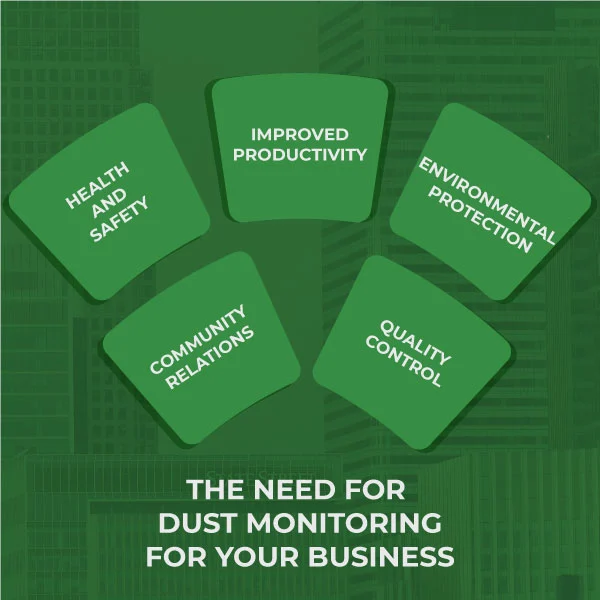10 Key Takeaway Points:
- Dust pollution is a significant concern in industries and construction sites, posing health risks and regulatory challenges.
- Dust monitoring is essential for regulatory compliance and ensuring workplace safety by tracking particulate matter (PM) emissions.
- Four dust measurement principles include transmission, forward scattering, backward scattering, and extractive measurement.
- The transmission principle is used for medium to high dust concentrations in power plants and refineries.
- Forward and backward scattering measure low to medium dust concentrations in dry flues and process gases.
- Extractive measurement is used for flue gases with high humidity and wet scrubber systems.
- Regular calibration is crucial for dust monitor accuracy, correcting sensor drift due to environmental factors.
- Accurate dust monitoring helps with regulatory compliance, air quality assessments, and occupational safety.
- Oizom’s Dustroid achieves high accuracy through laser scattering and calibration against U.S. EPA-designated standards.
- Factors like flow rate and dust particle distribution affect dust monitor accuracy, emphasizing the need for regular calibration and skilled operation.
What is the measurement principle of a Dust Monitor? A Quick Guide
Dust pollution is a serious concern in many parts of the world, especially for industries and construction sites. In fact, industrial plants are legally required to monitor and report their daily dust emissions, with limits varying based on the type of fuel and plant. This is measured in milligrams per cubic meter (mg/m³). But dust isn’t just an issue for factories. Construction sites are also major contributors. Dust generated from machinery and worker activities gets dispersed into the air, forming fine particles easily inhaled, posing significant health risks.
If you’re already monitoring gaseous emissions, keeping track of dust levels is equally important. Dust monitoring devices help you understand how much dust is being released, where it’s coming from, and what it’s made of. This information is crucial not only for meeting regulatory standards but also for protecting human health and ensuring a safer working environment. This blog will dive into the four key dust measurement principles and why calibration and accuracy are so important in dust monitoring systems. Got questions? We’ve got the answers; just keep reading!
Four dust measurement principles
Common dust measurement principles are listed below. You can read them for more details.
Transmission principle
Some countries require opacity measurements, such as in power plants and refineries. This can only be calculated using the transmission principle, not the dispersed light approach. In the transmission principle, a light source sends white light into the flue gas duct, which is reflected back by a reflector on the other side. Thus, it hits dust particles, which scatter and partially absorb the light, lowering its intensity. The detector measures this value, which offers information regarding dust concentration. The application of this principle: Continuous, contactless dust and opacity measurement at medium to high concentrations in dry flue and process gases.
Scattered light principle: forward scattering
The scattered light concept works well for determining low dust concentrations in flue gas, such as those produced by waste incineration plants. Here, The dispersed light principle involves sending a laser beam into the stack, which hits dust particles that scatter the light in various directions. In forward scattering, the detector identifies the intensity of light scattered by dust particles in the direction of the laser. The application of this principle: Continuous detection of low to medium dust concentrations in dry flues and process gasses.
Scattered light principle: backward scattering
The scattered light concept works well for determining low dust concentrations in flue gas, such as those produced by waste incineration plants. In backward scattering, a detector is used to measure the intensity of the light that is scattered backward by the dust particles. For continuous, non-contact detection of low to medium dust concentrations in dry flue and process gases. Also suitable for corrosive gasses and potentially explosive environments. Useful in industries such as refineries.
Extractive measurement
Extractive measurement is the solution for process gases with more than 95% relative humidity. It is also suited for all flue gases at temperatures lower than the dew point of water and acids. Dust concentrations in flue gases containing liquid from cleaning with wet scrubbers must also be assessed in this manner. A probe is used to continually extract flue gas from the duct, which is then diluted and heated. This generates a dry flue gas, the dust concentration of which is determined in the measuring equipment outside the duct using the scattered light concept.
Calibration and Accuracy of Dust Monitors
Calibration is critical to ensuring the accuracy of dust monitors. Regular calibration aligns the device’s readings with reference instruments, enhancing the precision of dust concentration measurements. This process corrects sensor drifts caused by environmental factors like temperature and humidity. Without proper calibration, data inaccuracies can mislead decision-makers, especially in industries where dust exposure impacts health and safety.
Accurate dust monitors provide reliable data for regulatory compliance, air quality assessments, and occupational safety. Calibration protocols typically involve comparing the monitor’s data with a certified reference and adjusting the readings accordingly. For optimal results, it’s essential to follow manufacturer-recommended calibration intervals, usually every 6-12 months.
Maintaining calibration standards ensures your dust monitor delivers consistently accurate results, reducing risks and enhancing operational efficiency. Always use certified calibration tools for precise adjustments and document calibration records for compliance audits.
Curious about how Oizom ensures its devices’ accuracy? Here’s how! Our monitors undergo a 72-hour collocation calibration process next to a custom-built reference station featuring a beta attenuation monitor (BAM) with U.S. EPA-designated Federal Equivalent Method (FEM) standards. This ensures top-notch data quality.
Dustroid, for example, delivers impressive accuracy even at low dust concentrations, achieving an R2 > 0.85 when compared with Horiba’s FRM.
Factors Affecting Accuracy

It investigates different factors affecting dust monitor accuracy, considering challenges and approaches in the environmental and technical aspects.
Sampling Precision Error
- Measuring accuracy error is another factor affecting dust measurement dependability. Some of the sources of these errors are inaccurate equipment calibration, operator skill, and variability in dust particle size distribution.
- To reduce such inaccuracies, dust monitors must undergo regular calibrations based on the manufacturer’s recommendations and are operated by trained personnel.
- In technical terms, The sampling precision error (a measure of reproducibility) for individual concentration measurements was independent of dust concentration but inversely related to the sampling period.
Flow Rate Influence
- The airflow through a dust monitor significantly affects the measurement’s accuracy. Incorrect flow may cause recorded particulate matter to decline, causing oxygen concentrations to be underestimated or overestimated. Therefore, it is important that environmental personnel monitor and verify flow charts regularly.
Distribution Characteristics
- The size, shape, and density of dust particles determine how monitoring equipment samples them. Monitors calibrated for one particle size may not reliably capture another, demanding an in-depth knowledge of the particulate matter under investigation.
Conclusion
Dust monitors are invaluable tools for quantifying and monitoring airborne dust particles. By using advanced measurement principles like light scattering, these devices accurately detect and measure particulate matter (PM) levels, providing real-time insights for effective air pollution control. Whether in construction sites, manufacturing plants, or public spaces, dust monitoring helps in compliance with regulations and promotes healthier environments. By utilizing dust monitor capabilities, we may better understand and reduce the impact of dust on our health, the environment, and our daily lives.
Want to know how Oizom’s Dustroid uses the laser scattering principle to deliver accurate dust data on construction sites? Check out our Birla Estate case study to see how it helped maintain air quality, ensuring a safer and healthier workspace with real-time monitoring!






